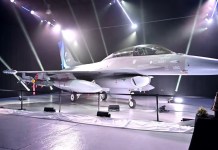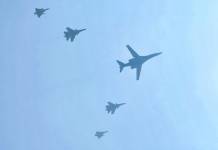Russia-Japan relations have been complicated and the Soviet–Japanese Joint Declaration of 1956 has not made life easy. While the Japanese seem to have little chance of ever getting Shikotan and Habomai Islands, but both Russia and Japan have been engaged in endless negotiations. EurAsian Times analyses the Joint Declaration of 1956 and if the USSR made an error?
Japanese Prime Minister narrated the precise details of three hours talks with his Russian counterpart Putin. He said that Russian President devoted almost 80% of his seven minutes to discuss the economic and other cooperation from the construction of LNG terminals to the Theatre Olympiad and remaining 20% to talk about the peace treaty. But Abe called the atmosphere for talks absolutely sincere and serious.
The two leaders confirmed that agreement with respect to a peace treaty will be based on the 1956 Moscow Declaration. A military expert believes that “having received Shikotan Island, US troops would take control of the Catherine Channel between Kunashir and Iturup, which is very important for the Pacific Fleet.
The Japanese side tried hard to push forward Russian-Japanese peace treaty. The peace agreements had different definitions: “peace treaty”, simply “peace” or “treaty” (indicating the place of signing), “treatise”, “conventions”, etc.
The Joint Declaration of 1956 could be interpreted as “The state of war between the Union of Soviet Socialist Republics and Japan ends on the day of the entry of this Declaration into force, and peace and good neighbourly relations are restored between them”.
The Joint Declaration, Article 9 mention another “additional” future “peace treaty” (only after signing of which Japan will receive a carrot in the form of Shikotan and Habomai) was a ploy of the Soviet side, which hoped to prevent the conclusion of the US-Japan treaty legalizing the deployment of US military bases.
When discussing the “final peace treaty”, the USSR could always change the carrot to the whip, and the Japanese were still shocked by the American atomic bombing and were ready to do much to remove the threat from another nuclear power. The Americans had something to clutch at the head.
Secondly, the contradiction of Article 9 and Article 6, according to which Japan surrendered all claims “arising from the war” (Soviet-Japanese as part of World War II). Hence, the promise of article 9 on Shikotan and Habomai lost all binding, it became a purely an act of goodwill on the part of the USSR. Japan has no right to demand something in any form.
The staging of the formal and actual transfer of territories in international treaties can be applied in two ways: either at first a formal transfer and then an actual one, or vice versa. The Article 9 states that the USSR “agrees to the transfer of Japan to the Habomai Islands and Sikotan Islands, however, that the actual transfer of these islands to Japan will be made after the conclusion of the Peace Treaty”. That is, the declaration explicitly states that the USSR agrees to the transfer of the two islands only after the agreement.
The Ministry of Foreign Affairs of the Russian Federation abstains from explanations, probably in order not to complicate the negotiations. Meanwhile, Japanese partners have long borrowed the Western negotiation model, which complicated the process.
Did USSR Make Mistake in 1956?
The question remains: did the Soviet government make a mistake in 1956, promising Japan Shikotan and Habomai in one form or another? The Japanese delegation, returning from Moscow, was greeted as heroes: they rescued the prisoners and removed the threat of a new nuclear disaster.
The problem of Shikotan and Habomai in the country lay on the official periphery. The Japanese only wondered why these islands were taken away from them, if they do not even belong to the Kuril Islands, but are a group belonging to Hokkaido, something like Rishiri and Rebun on the other side of a large island.
Perhaps the trick of the Soviet side with Article 9 only prompted the Americans to link the question of Shikotan and Habomai with the claims of the radicals on Kunashir and Iturup and create a “problem of the Northern Territories”.
The promotion of hysteria by the Japanese media controlled by the US began in mid-1957. Especially after the unequivocal threat of the United States to change the status of the Japanese island of Okinawa in the event of the signing of a peace treaty on Soviet terms.
Contrary to popular belief, the USSR did not cancel and certainly did not denounce the Moscow Declaration after the signing of the US-Japan agreement in 1960: diplomatic relations were not broken, the state of war did not resume. The Soviet side has de facto suspended the validity of Article 9, and, consequently, the entire declaration, without making a final decision on its fate.
Mikhail Gorbachev, even in the last year of the already collapsing USSR (and perhaps that is why), during his visit to Tokyo, refused to mention the declaration in his speech. This was done by Boris Yeltsin, who recognized the relevance of the declaration in 1993.
Japanese Prime Minister Abe is a little amused by the demand for some “guarantees” of the transfer of Japan to Shikotan and Habomai after the conclusion of a peace treaty. The forces are primarily the Ain community of Russia (from 200 to 800 Ainu and Métis), attracting about the same number of Japanese Ainu, sincerely committed to the revival of the Ainu language and culture.
Compliance with the interests of Russia and Japan is guaranteed by a tripartite agreement. And yes, citizens of the Russian Federation remain citizens of the Russian Federation and remain in Shikotan.




